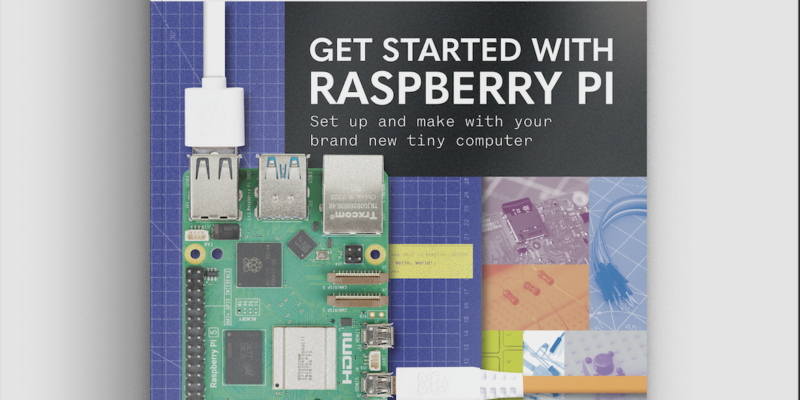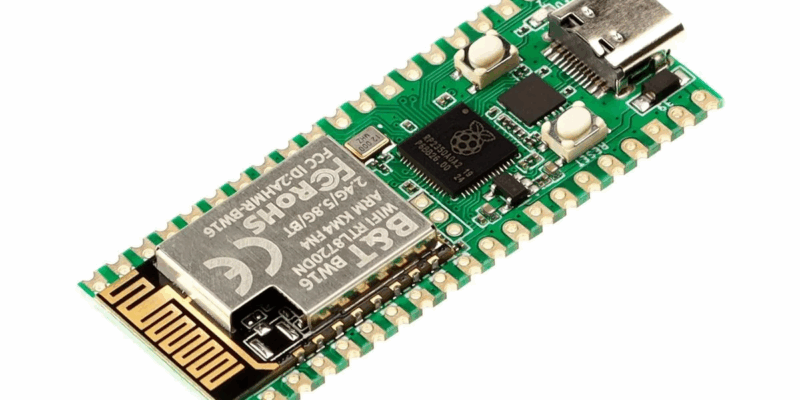Twirly Shirley
By Phil King. Posted

Precision turntables are ideal for rotating items to photograph, among other uses, but can cost hundreds of pounds. So VEEB Projects’ $50 DIY precision turntable – using Raspberry Pico W, 3D printed parts and a stepper motor – is all the more remarkable. It’s actually an upgrade from the duo’s previous turntable that featured an IR remote.
“We already made a turntable about a year ago to solve a problem we were having taking photos of something,” reveals Martin Spendiff. “We wanted a turntable, but one we could control programmatically, so that we could be flexible in generating stop-motion footage.”
Advertisement
Get started with Raspberry Pi – everything you need to know to start your journey!
That first turntable used a DC motor, which lacks precision, resulting in inconsistent movements which vary with the weight of the object placed on it. “We wanted something more precise,” recalls Martin, “and we wanted a remote that we didn’t keep losing, so we put it as a page on a web server.”
In addition, they simplified the original version’s 3D-printed gearing system, which included a worm gear, to use two gears instead of three.

Web-based spinning
Raspberry Pico W has a web server running on it, based on Simon Prickett’s Phewap project. On that server sits a page that shows a virtual remote. “The buttons trigger some MicroPython code that tells the turntable’s stepper motor to turn, then 3D printed gears translate the movement from the motor to the bearing, which in turn moves the turntable.” The ‘lazy Susan’-style bearing, as used in turntables for the dining table, features multiple metal balls between two circular metal plates for low-friction movement.
Since the stepper motor they used requires a fairly hefty voltage, a 20V Power Delivery trigger board is used to step up the voltage supplied via USB-C. “Using PD triggers was one of the good bits: it makes for a much smaller build than having to try to cram a power brick in there too. They’re really cheap too, so it’s a rare win-win.”

VEEB chose Raspberry Pi Pico W for the project due to “a flat refusal to use C, due to lack of skill, and the knowledge that the documentation for Raspberry Pi stuff is less sparse than for other microcontrollers,” says Martin. “When we get stuck, there’s usually someone that has run into a similar problem and documented it somewhere.”
Learning process
Martin reckons the project took around a year to complete, working on and off. “There were a few mini projects in there: learning enough OpenSCAD for the gears, learning enough CSS for the remote page, getting the stepper motor to work. It was one of those things that you keep going back to when you learn something new during another project.”

An impressive stop-motion video of a roller-skate and disco ball for the Twirly Shirley YouTube video was shot using a camera taking photos at set intervals, but a possible upgrade would be to use a Raspberry Pi single-board computer to automate the process. “An SBC could take photos and send requests for the turntable to move,” notes Martin. “The last thing we made used web sockets to make a Pico listen for signals being broadcast from a [Raspberry] Pi with a camera attached.”

When not editing books and contributing to The MagPi, Phil enjoys playing the piano (badly), astronomy, and watching classic sitcoms.
Subscribe to Raspberry Pi Official Magazine
Save up to 37% off the cover price and get a FREE Raspberry Pi Pico 2 W with a subscription to Raspberry Pi Official Magazine.
More articles

Get started with Raspberry Pi in Raspberry Pi Official Magazine 161
There’s loads going on in this issue: first of all, how about using a capacitive touch board and Raspberry Pi 5 to turn a quilt into an input device? Nicola King shows you how. If you’re more into sawing and drilling than needlework, Jo Hinchliffe has built an underwater rover out of plastic piping and […]
Read more →

Win one of three DreamHAT+ radars!
That’s right, an actual working radar for your Raspberry Pi. We reviewed it a few months ago and have since been amazed at some of the projects that have used it, like last month’s motion sensor from the movie Aliens. Sound good? Well we have a few to give away, and you can enter below. […]
Read more →

RP2350 Pico W5 review
It’s Raspberry Pi Pico 2, but with a lot more memory
Read more →
